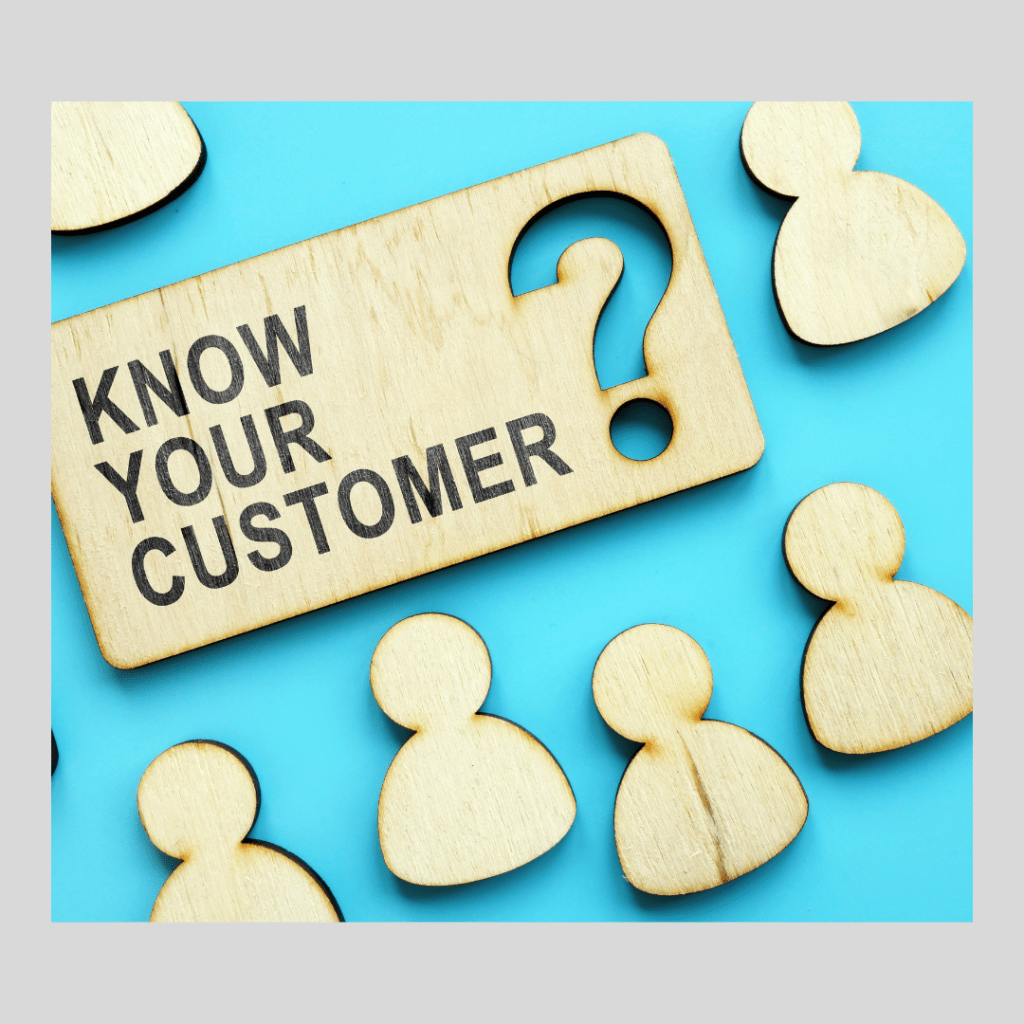
This sounds like just another one of those buzz word things – so what am I talking about?
Every business wants their customers to be happy with the service and experience they receive. But, unless you have your customers in mind at every single touch point, you could be missing out on some great opportunities to delight them and keep them coming back for more.
What is a touchpoint? According to SurveyMonkey, the definition of a touchpoint is “…any time a customer or potential customer comes into contact with your brand…before, during or after they purchase something from you”
You may have great products, delivered on time and with a smile, but if your advertising isn’t on target, or they receive billing mistakes, or have to deal with a clumsy and clunky website, you can scare your customers away. Luckily, these touchpoints are easily fixed and within our control.
Let’s take a look at the general touchpoints a customer will come across…these are just some examples.
Before a sale – Social Media sites, Website, Customer reviews, Advertising/Marketing.
During a sale – Shop or office, Catalogue, Phone.
After a sale – Billing, Emails, Newsletter
Make a list of the touchpoints your customers have with you, then look at them in turn, e.g. your website…is it easy to navigate? Do the tabs point to the right things? Do the links work? Are you easy to contact? Do customers get a quick reply if they do contact you?
Supercharge your touchpoints
Now it’s time to supercharge your touchpoints for a better customer experience.
Personal touch – Try and speak to a customer wherever you can as most people like to be treated as individuals. I prefer to speak to a real person, not an automated service as I can ask questions and, if there is something I don’t understand, I can simply ask. It is also easier to build a relationship with your customers if you actually take the time to talk to them, as it makes them feel valued. They will feel that they are important to you and your business, that their custom is appreciated and that their opinion matters.
Consistent Service levels – Be consistent across all your dealings with customers, not just on the phone. You have won their custom and now it is time to build their loyalty and gain that all important customer satisfaction. So, not only ensure that you give excellent customer service on the telephone, ensure that they receive the same experience if they email you, such as a prompt reply, with the answer or solution they want wherever possible.
Know your customers – Know what your customers want and who they are. If you can solve a problem for a customer, do it…they will always remember that you went that extra mile…and will recommend you to family and friends. Something that you did this year that went really well, might not work next year – never make assumptions where your customers are concerned. One of the simplest ways to know what your customers want is to ask them. This could be via a courtesy phone call (but be careful not to be a nuisance), via a short survey or hold an event, where you can interact directly with your customers and they can see who you are and meet you properly.
Resolve any mistakes – If you make a mistake, own up to it and put it right quickly. Don’t blame anyone else, just resolve it and offer some kind of compensation, such as 10% off their next order. The four step system is a good way to deal with complaints.
Listen to the complaint…don’t argue or put the blame on someone else – the customer doesn’t want to hear this – he/she just wants you to listen to what they have to say.
Acknowledge the complaint – let the customer know that you understand their complaint by relaying it back to them. This not only shows that you have been listening but gives hope that something will be done. Thank them for bringing the situation to your attention and assure them that something will be done.
Solve the complaint – if you can, resolve the issue, keeping the customer informed along the way. In the first instance, after you have acknowledged the complaint, say that you will look into it and will get back to them within 24 hours – even if you haven’t resolved the problem yet, ring them within 24 hours to let them know what’s happening. Keeping them informed every step of the way is very important in keeping that customer in future and lets them know that they are a valued customer.
Thank them – you have already done this when you acknowledged the complaint but do it again. If the issue has taken or is like to take a long time to resolve, maybe offer them some kind of compensation – a money-off voucher or a free gift.
Appreciate your customers – Let your customers know they are valued, e.g. send regular customers a ‘thank you’ card, or give them a money off voucher for being loyal, or ask if they’d like their purchases gift-wrapped.
It’s also really crucial to look past the sale…once your customer has bought something from you, don’t make it the last time they hear from you…follow up the sale and ask how they are getting on with the product. Are they happy with it? Do they think it could be improved? Do they have any questions about that or any other product that you sell? They may tell you about a problem they have that you can solve for them, or give you an idea for a new product.
If your customers are really happy with the goods and/or services they receive from you, ask them if they could write a short review, either on your Facebook page or on your website…or if they prefer, they can send to you on email. Ask if it’s OK to share their review with other customers and potential customers.
Whether your business is a huge concern, or just a one-man/woman team, excellent customer service must be at the heart of everything you do. It can take extra time and resources, time and money, but good customer service leads directly to customer satisfaction, which can generate great business for you via word of mouth. It can also you’re your business thrive and ultimately be a success. Never underestimate the power of good customer service – it’s your businesses life-blood.
Please feel free to email me if you have any questions or need any help with your marketing. I offer a free discovery call to discuss your business and how I can help.











 OK, so you’ve tested whether you can be found, you’ve registered your business to make it easier to be found in search engines. Now you need to look at your website and ensure you have the right keywords and phrases in place.
OK, so you’ve tested whether you can be found, you’ve registered your business to make it easier to be found in search engines. Now you need to look at your website and ensure you have the right keywords and phrases in place.

 As the title suggests, having an online presence means that your business is ‘open’ 24 hours a day, 7 days a week….even when you are asleep. Information about your business, your services, what you sell, are there at your customers’ and potential customers’ fingertips. People are always looking online – they research products before they buy and if you have an online presence, and you happen to sell what they want, you could make a sale. If you don’t have a website, you are invisible….and in this day and age, you can’t afford to be.
As the title suggests, having an online presence means that your business is ‘open’ 24 hours a day, 7 days a week….even when you are asleep. Information about your business, your services, what you sell, are there at your customers’ and potential customers’ fingertips. People are always looking online – they research products before they buy and if you have an online presence, and you happen to sell what they want, you could make a sale. If you don’t have a website, you are invisible….and in this day and age, you can’t afford to be. Through your website, you can be seen as an expert in your field, and through the recommendations and comments from satisfied customers, you can be seen to be reliable, trustworthy and that your products are top notch.
Through your website, you can be seen as an expert in your field, and through the recommendations and comments from satisfied customers, you can be seen to be reliable, trustworthy and that your products are top notch. Not only does having a website make you more credible, it also shows that your business is established and that you are experienced at what you do. Even if your competitors are stronger than you, a well-built, mobile friendly website can entice customers to choose you instead. You might operate your business from the tiniest desk space in the corner of your dining room, or make your products in your tiny spare bedroom, but when you have a website, your customers don’t see this. All they see is the power of your brand – size doesn’t matter!
Not only does having a website make you more credible, it also shows that your business is established and that you are experienced at what you do. Even if your competitors are stronger than you, a well-built, mobile friendly website can entice customers to choose you instead. You might operate your business from the tiniest desk space in the corner of your dining room, or make your products in your tiny spare bedroom, but when you have a website, your customers don’t see this. All they see is the power of your brand – size doesn’t matter! products – you just add them online at the click of a button. You can include tons more information and images than you could afford to put into a brochure.
products – you just add them online at the click of a button. You can include tons more information and images than you could afford to put into a brochure. website, you may spend endless wasted time on the telephone or email giving people directions to where you are, giving details of the products you sell or the services you offer. Your website gives all these details in one, easy to access space, available 24/7. Not only does it give these basic details, it also gives more detailed information about your products. Then, when people do contact you, it’s generally about something more specific or to actually buy from you or use your services.
website, you may spend endless wasted time on the telephone or email giving people directions to where you are, giving details of the products you sell or the services you offer. Your website gives all these details in one, easy to access space, available 24/7. Not only does it give these basic details, it also gives more detailed information about your products. Then, when people do contact you, it’s generally about something more specific or to actually buy from you or use your services. Advertising in your local paper, putting out your business cards and attending markets, conventions and networking events, are all brilliant ways of getting your products and brand out to a wider audience. However, with a website you literally have a worldwide audience. Business often comes from word of mouth and this is a great way to get local business, but in order to expand and reach customers that don’t know you, the internet is the way forward.
Advertising in your local paper, putting out your business cards and attending markets, conventions and networking events, are all brilliant ways of getting your products and brand out to a wider audience. However, with a website you literally have a worldwide audience. Business often comes from word of mouth and this is a great way to get local business, but in order to expand and reach customers that don’t know you, the internet is the way forward. website, then why shouldn’t you have one? The joy of having a website is that it doesn’t matter how big or how small your business is, it will help you reach more people and increase your sales. Through your website, you can gather information about your customers. You can use your website to host an online survey to find out what your customers want and online forms can be used to easily contact you to request a quote or ask for further information. When you know what your customers want, you can develop products or services to solve their problems or meet their needs.
website, then why shouldn’t you have one? The joy of having a website is that it doesn’t matter how big or how small your business is, it will help you reach more people and increase your sales. Through your website, you can gather information about your customers. You can use your website to host an online survey to find out what your customers want and online forms can be used to easily contact you to request a quote or ask for further information. When you know what your customers want, you can develop products or services to solve their problems or meet their needs. customers email addresses, and with their permission, can send them regular updates about new products. This makes them feel valued and valued customers will come back to you time after time.
customers email addresses, and with their permission, can send them regular updates about new products. This makes them feel valued and valued customers will come back to you time after time.